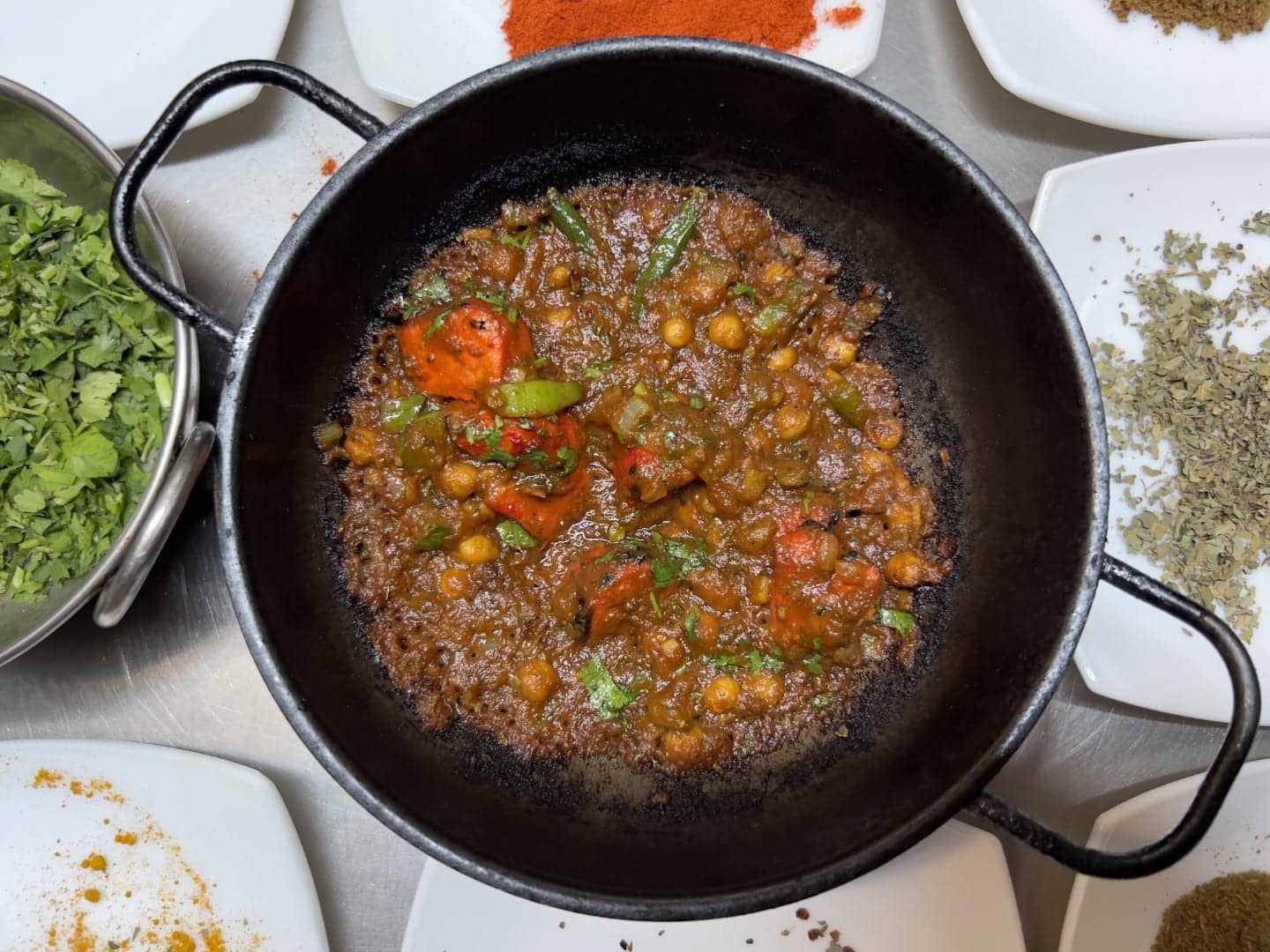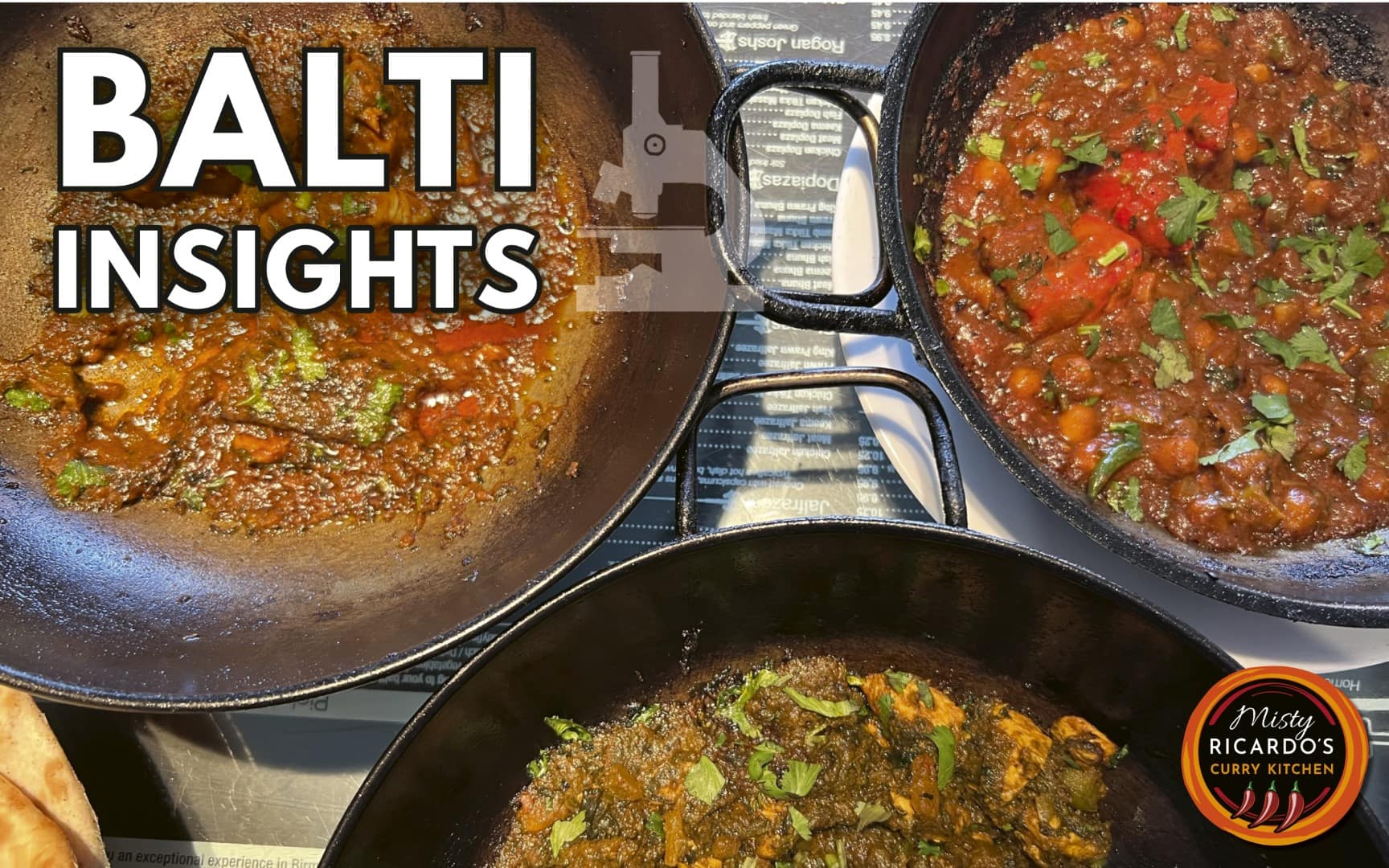Recently I had the privilege of being inside the kitchen of Shababs Balti restaurant in the Birmingham Balti triangle, to film some cooking videos and to spend time with the chef Zaf Hussain.
Zaf was generous with the information he gave, and I learned a lot more about authentic Balti whilst there. I was accompanied that day by Balti ambassador Andy Munro, and a fellow enthusiast Andy Lees from the Midlands with a lifelong love of the dish. There was a lot of Balti love flying around.
Now equipped with some of the recipes used at Shababs, and a comprehensive understanding of the cooking techniques I’ll be publishing some recipes which strive to recreate the authentic Balti flavour at home. For instance, here’s the Balti Base Gravy recipe which I’ve scaled down from the massive batches used at Shababs, to a much more manageable size at home.
Please read on for some key points about how Baltis are cooked in restaurants, and for some tips on making them at home in your kitchen.
Balti Cooking in the Restaurants
- Authentic balti restaurants (such as the pukka ones in Birmingham) cook and serve baltis in a special carbon steel bowl. Those bowls are thin which allows a rapid transfer of heat and are in a squat shape around which the high gas flame can envelope.
- The high cooking temperate and the enveloping flame imparts a smoky and slightly charred flavour to the balti, especially around the edges. Some of the oil within the curry is burned off by the gas flame.
- Fresh ingredients such as onions, garlic, green pepper, chilli, and tomatoes are usually added when a balti is cooked. However, like most Indian restaurants and takeaways they also add a pre-prepared spiced onion-based sauce (base gravy) to allow them to cook a balti in a short time, e.g. 5-6 minutes.
- The base gravy I’ve encountered at Shababs restaurant (in the Birmingham balti triangle) is prepared with no other vegetables than onions and is cooked for an extended period. Other ingredients include oil, tomato purée, fresh tomatoes, tinned tomatoes, garlic, ginger, turmeric, paprika, chilli powder, salt, and whole spices (green/black cardamom, cassia bark, bay leaves, and cloves).

Balti Cooking in the Restaurants
- Interestingly, when the gravy is blended the whole garam masala spices are left in. Also, there’s a larger proportion of tomato content than typical Bangladeshi style base gravies. This may be because Shababs don’t use tomato purée when cooking baltis and rely on a small amount of fresh tomato instead when required. The moisture from the fresh tomato helps stop the other ingredients from burning on such a high heat.
- At Shababs fresh chicken is used as opposed to adding it already cooked to a balti. The exception is when a chicken tikka variant has been ordered in which case pre-marinated chicken is grilled and used as fresh as possible. Lamb and other ingredients are pre-cooked for speed of service.
- Authentic balti is always served to customers in the same bowl it was cooked in. It’s customary (but not essential) to have naan as an accompaniment, and to use the naan in lieu of cutlery.
As an example, have a look at this video of a Balti Keema Peas being cooked at the Shababs Balti restaurant.
Cooking Balti at Home
- Most of us don’t have a gas burner anywhere near as powerful as those in the commercial kitchens. Indeed, many people don’t have a gas hob but use an electric (standard or induction) cooker instead. This presents a challenge for those who want to recreate the authentic balti flavour at home, as the heat is an important factor in achieving an excellent balti taste.
- Additionally, many will not own the most optimal balti cooking vessel, such as a thin carbon steel balti bowl or korai. However,
- There are some techniques that can be adopted to help with these challenges.
» Cook for one person – limiting the amount of ingredients being cooked increases the maximum temperate possible. The more you add the harder it is to increase or maintain heat.
» Use a thin carbon steel balti bowl. In the absence of that, a small carbon steel wok will do the job. The thinner and smaller the better – the heavier it is the more heat will be lost.
» A small aluminium frying pan (e.g. 24cm diameter) that’s not non-stick is another option, although if won’t work on an induction hob.
» If cooking on gas, use the most powerful ring you have, and on full pelt, and in the most ideal scenario with the flame wrapping around the outside of the cooking vessel.
Cooking Balti at Home
» If using an electric hob, the heat distribution will be evenly spread across the base of the cooking vessel whereas with gas, the heat will be focussed around the edges. Keep that in mind, especially with induction and try to avoid the balti burning at the bottom of the pan.
» Add ingredients at near room temperature, not straight from the fridge.
» Stir as little as possible, as doing so shed a lot of heat.
» Add base gravy hot. Keep it simmering away in a saucepan nearby.


